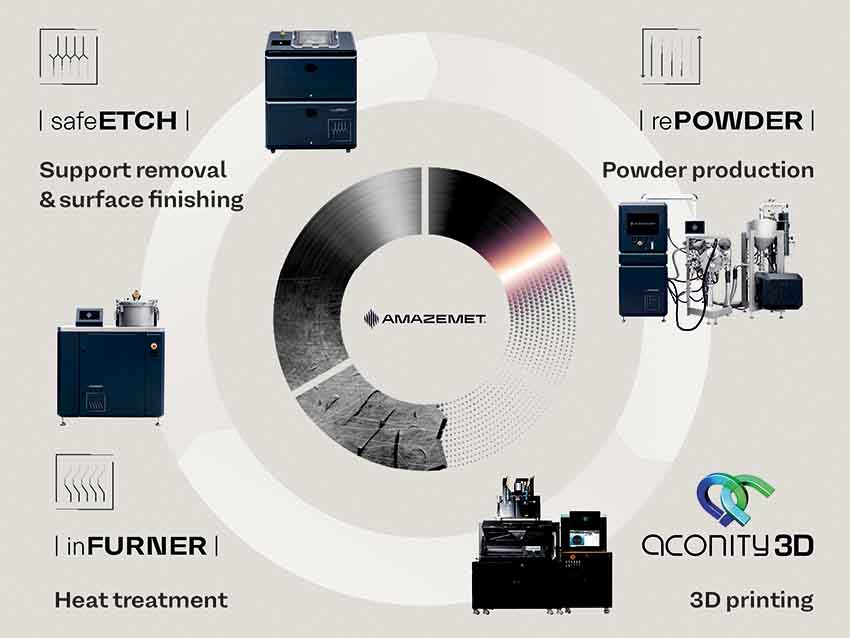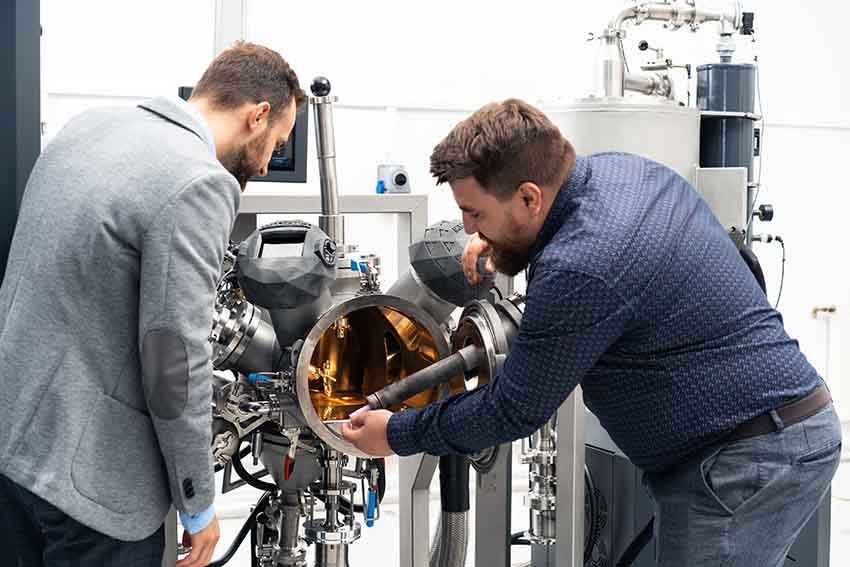AMAZEMET is an international company being an executive partner for many scientific organizations and technological companies in technology development and prototyping.
The company is a world-class leader in ultrasonic technologies.
Interview with Kacper Obłuski, Marketing Specialist at AMAZEMET.
Easy Engineering: How do you see sustainability and what are your efforts in this direction?
Kacper Obłuski: Sustainability is a very wide topic that is mostly recognized as using green energy and reducing waste. For us, one of the most important aspects of sustainable business is not only waste reduction, but reusing as much as possible. Very often extraction of substrates is the most energy-consuming stage in the whole production process. That’s why it’s so important to reuse the subtracts that are already there. A great example here are rare earth elements, or precious metals that are widely used in a variety of industrial applications. An additional important aspect of the sustainable approach is always looking forward – toward the future possible threats or applications of new technologies that are being developed and turning threats into opportunities. And that is essentially the core of AMAZEMET sustainable thinking – contribution to the development of new technologies, particularly in the area of metal additive manufacturing, and providing equipment and know-how to recycle used material eg. in the research for new alloy compositions or metal 3D printing applications.
E.E: Tell us about the sustainable solutions that you offer (if any).
K.O: Basically, the whole AMAZEMET product lineup is a sustainable solution. One of the key aspects behind our technologies is that together they create a closed loop for metal additive manufacturing. Starting with rePowder – an ultrasonic atomizer and new alloy prototyping platform – we provide a way to produce metal powder from any form of feedstock, including failed parts, used powder, or scrap from other manufacturing processes. Next, we offer metal 3D printers as GE Additive Sales Representative in Poland, and distributor of Aconity 3D. Printed parts can be heat treated in our high vacuum furnace – inFurner and the circle closes with safeEtch – the device for automated support removal from metal prints. After those four stages – powder production, printing, heat treatment, and support removal with surface finishing, the part, together with unused powder, can be put back into rePowder to create another batch of powder suitable for printing.

E.E: Do you offer solutions for reinvigorating old equipment with new solutions?
K.O: One of the key features of rePowder is its modularity. Standardized connections allow us to deliver the device in the setup that meets exactly the current needs of the customer, avoiding overproduction, but with the possibility to later expand the device’s functions with additional modules. What’s more, outdated modules can always be swapped into new ones, equipped with the latest technology, extending the lifetime of the whole device.
E.E: Tell us about sustainability in production & distribution.
K.O: As a rapidly growing company, our efforts in sustainability in production are mostly focused on maximizing efficiency and minimizing waste. Those may seem like very basic things to do but with such a young company it’s a great responsibility to put those values at the core of every action to remain sustainable in the later stages of company growth. When it comes to distribution, our approach is based on local distributors who have a deep understanding of local conditions. That way we do our best to enhance the development of local businesses but also it allows us to greatly reduce amounts of worldwide travel for the sake of a sustainable lifestyle.
E.E: Tell us about R&D and innovation.
K.O: All of our R&D aims at creating new possibilities for metal additive research and industry in terms of new materials development and circular economy of materials. The constant development of rePowder device provides more and more efficient atomization process of any alloy from any feedstock form.
On the other hand, there’s a ground-breaking technology of safeEtch – an innovation that allows to greatly increase production capacities of metal 3D printing, therefore making the whole process much cheaper and financially viable for a wider array of manufacturers. Combined with advanced printing technologies and strategies in the future it might lead to much more efficient use of materials and energy – thanks to all the advantages of additive manufacturing, eg. the production of multi-material parts in one process.

E.E: What is the company strategy to reduce environmental impact?
K.O: As mentioned before – it’s mostly participation in the development of the worldwide manufacturing industry. Of course, there are also internal actions focused right now mostly on production and development efficiency. For the future, there are plans considering the use of renewable energy as the company grows.
E.E: Tell us about preserving resources and driving circularity.
K.O: Also as said before – the whole company philosophy is built around the closed-loop production system and the reuse of resources. That is always the thought in the back of the head when introducing new solutions as well as in the everyday activity of the company.
E.E: How do you drive focus on sustainability of operations?
K.O: Efficiency in every action. It doesn’t matter where the energy comes from as long as it’s being wasted. The other aspect is the focus on the ability to adapt to the changing environment and staying flexible. We believe that those are the basics of sustainable operations – the use of energy in the best possible way and quick reaction when everything around changes to remain efficient.
E.E: How do you see sustainability in the future?
K.O: The core of sustainability will always be the same – a responsibility of actions and use of energy, flexibility, and constant innovation. The company will remain sustainable as long as it lives up to these basics, no matter the current state of technology or the environment. We’re living in very rapidly changing times and the things we consider today as “sustainable” tomorrow might turn out a great threat and something to avoid at all costs. There is no way to predict what sustainability in the future will look like, but we need to remember that it’s only up to us and how we create it.

